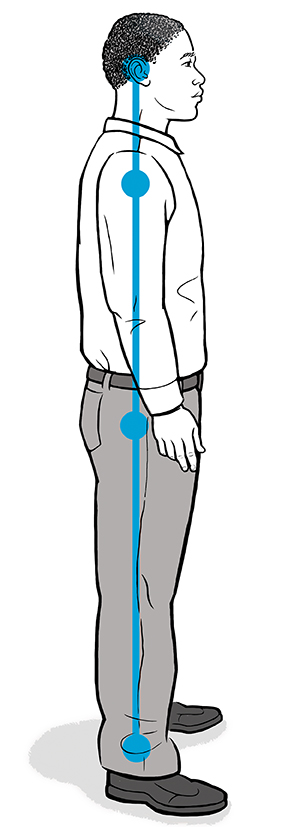Good posture decreases back pain by reducing strain on your muscles. Remember to check your posture, using the self-help tips below, every time you move or adjust position.
Standing
-
To help keep your spine straight, line up your ears, shoulders, and hips.
-
Stand with your feet shoulder-width apart. Or place one foot slightly in front of the other.
-
Keep your knees relaxed and stomach muscles slightly flattened.
-
Let your arms hang naturally down the sides of the body.
Bending over
-
Bend at your hips and knees.
-
Don’t bend at your waist or round your back.
-
Rest your weight on your arms if possible.
Working
-
When standing for a long time, shift your weight from your toes to your heels, or one foot to the other.
-
When reaching for objects over your head, use a stepladder. When you can’t, be sure to tighten your stomach muscles to keep your back from arching.


